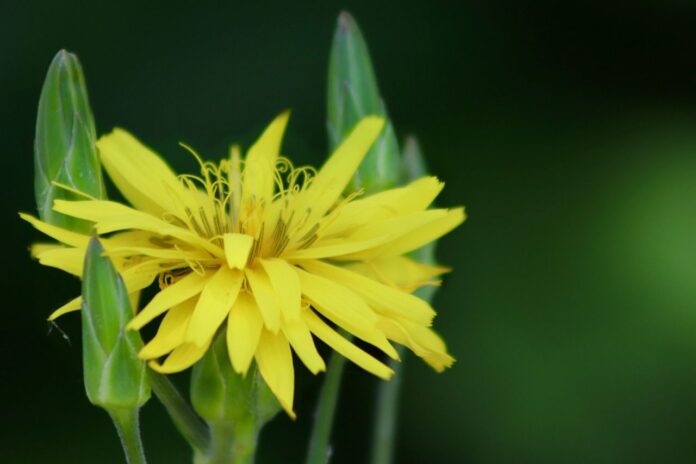Black salsify, sometimes referred to as black oyster, was once a popular vegetable. Recently, interest in useful plants has been growing again, and there are also more recipes for preparing them at home. Nowadays, black salsify can be found more and more in supermarkets or easily grown in the garden.
The folk name of this vegetable – serpent root, originates in the word “scorzone”, which, in Italian, is the name for a poisonous snake. Once, it was believed that if the root of this plant is placed in the mouth of a snake, it will immediately die. Until the 16th century, the black salsify (botanically Pseudopodospermum hispanicum/Scorzonera hispanica) used to be consumed by Celtic and Germanic peoples. They believed that the roots could protect them from the plague and snakebites. The serpent root was later widely cultivated, mainly for culinary purposes. In the beginning, it was common in southern Europe and the Middle East. However, with its growing popularity, the fields that produced this vegetable began to appear elsewhere.
 Currently, the world’s largest producers of black salsify are France, Belgium, and the Netherlands, and the Belgian black salsify is mainly imported to the Slovak market. Typical of this almost inconspicuous vegetable are long, rich green leaves and yellow flowers that remind one of dandelions, for example. After all, this meadow plant resembles the multiple fruits created after blooming. However, the serpent root is not grown for the leaves and stalk but for the roots. They are about 40 cm long, and although they do not look attractive outside, they have white, delicate flesh inside. After disturbing the dark surface, a thick white juice flows from the root, dries after a few minutes, and forms a white layer on the damaged area.
Currently, the world’s largest producers of black salsify are France, Belgium, and the Netherlands, and the Belgian black salsify is mainly imported to the Slovak market. Typical of this almost inconspicuous vegetable are long, rich green leaves and yellow flowers that remind one of dandelions, for example. After all, this meadow plant resembles the multiple fruits created after blooming. However, the serpent root is not grown for the leaves and stalk but for the roots. They are about 40 cm long, and although they do not look attractive outside, they have white, delicate flesh inside. After disturbing the dark surface, a thick white juice flows from the root, dries after a few minutes, and forms a white layer on the damaged area.
Medicinal Purposes
Serpent root is still an underappreciated and underused vegetable in central Europe. Its roots contain a large amount of water, carbohydrates, fiber, proteins, fats, aspargarine (similar to asparagus) and, above all, inulin, which is especially appreciated by diabetics. It is also a source of vitamins A, B1, B2, C and E. Minerals including potassium, phosphorus, magnesium, calcium, and iron. Allantoin is also part of the roots. It is an ingredient that promotes wound healing, as well as digestion and the activity of endocrine glands. The black salsify is characterized by a minimum caloric value and therefore fits perfectly into the diet.
In Recipes
Black salsify should be handled specially. First, it is necessary to wash the roots thoroughly and remove the dark surface layer with a scraper. However, the peeled root, which has a slightly almond aroma, is very sticky, so you should remove the dark surface layer after about 25 minutes of boiling in salt water. After cleaning (before cooking), it is best to soak entire roots in acidulated (lemon or orange) water to prevent the unwanted brown color of the pulp. Black root can also be eaten raw, for example, in salads or as a side dish. However, it also tastes good when cooked, boiled, stewed, baked, or even breaded and fried or as a pudding. It is also suitable for preparing creamy sauces and soups, it also tastes great with white meat. There is plenty to use it for. Try roasting the finely chopped roots in butter or oil; you can also pour broth over them and stir them. Interestingly, the inulin content contributes to the fact that black salsify creams and soups are naturally thick and have a pleasant fine consistency. If you want to increase the tastiness of this unusual vegetable dish, choose thinner roots when shopping because the larger ones are sometimes hollow inside.
Text: Daniel Košťál, photo: Pixabay, Daniel Košťál















